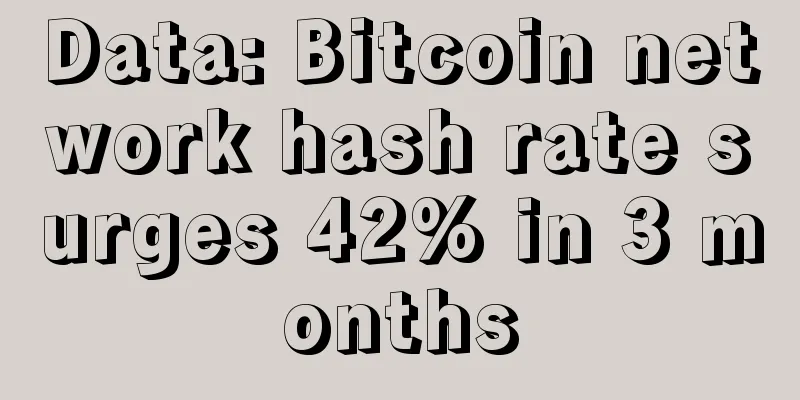After the halving, how much will it cost to conduct a 51% attack on Bitcoin?

|
This article is from Crypto Briefing, original author: Andrey Shevchenko Odaily Planet Daily Translator | Nian Yin Si Tang Bitcoin's network security relies heavily on block rewards, not transaction fees. With the halving coming, miners' income will decrease again. In this case, will transaction fees alone be enough to maintain the network? What does cybersecurity mean?The decentralized and immutable nature of a blockchain network means it is resistant to double-spending. For Proof of Work (PoW), this means it is resistant to a “51% attack” related to computing power.
Controlling more than half of the network's hashrate, and thus more than half of block production, would allow an entity to rearrange the blockchain network in any way it sees fit. Such an attack could potentially "undo" legitimate transactions. By creating seemingly valid transactions and then reversing them, an attacker could profit from trading on the exchange without spending any Bitcoin. The total network hashrate is the computing power used to secure the blockchain and is often considered a measure of network security. If the Bitcoin hashrate is high, it is often interpreted as a bullish indicator for the price - it means that the network is more resistant to 51% attacks. Mati Greenspan, a senior analyst at eToro, tweeted on September 27 that Bitcoin computing power has returned to all historical highs, and miners are clearly not scared by the price action that week.
While this explanation is generally correct, it is an oversimplification. The network hashrate is the sum of the hashrate of all mining rigs running at any given time and should not be analyzed in a vacuum. The cost and hashrate efficiency of these rigs can vary by orders of magnitude, which directly affects the cost of conducting a 51% attack. In the early days of Bitcoin, mining could be done on home computers. Today, efficient ASIC chips contribute almost all of the computing power. The change is amazing: in 2013, a top-of-the-line CPU could mine at 64 MH/s, while modern ASIC chips can mine at 53 TH/s - a difference of 828,124 times. There are usually two reasons for a big increase in network hashrate: an increase in the price of BTC or an improvement in ASIC technology. In both cases, it keeps rising until it reaches a new economic equilibrium defined by the profitability of the most efficient machines. With each additional device, the piece of the pie gets smaller for everyone else, and at some point, miners will start turning off machines that consume more electricity than they earn in rewards and fees. Both of these growth triggers occurred in 2019. The price of Bitcoin nearly tripled, and the new Bitmain S17 series ASIC miners were released in April 2019. Therefore, despite the decline in Bitcoin prices in the second half of the year, the hash rate continued to rise. Cost of a 51% AttackThe cost of conducting a 51% attack can be roughly estimated by calculating how many top-of-the-line devices are needed to recreate the existing hashrate. This calculation includes several simplifications: it assumes that the attacker does not already control a portion of the hashrate, and discounts the production, setup, and electricity costs of operating these new machines; it also assumes that major ASIC miner manufacturers such as Bitmain and Canaan Creative are willing to sell a corresponding number of miners (rather than using them for mining themselves). The S17 Pro mining machine produced by the mining machine giant Bitmain has a computing power of 53 TH/s and costs $2,500 per unit. The current computing power is 90 EH/s. Based on this calculation, a 51% attack would require approximately 1.7 million such devices at a cost of $4.2 billion. Surprisingly, this is not much higher than in February 2019, when the S15 was still the most powerful ASIC miner. At 28 EH/s and priced at $1,700, it would cost about $2.6 billion to "handle" 44 EH/s of network hashrate. This means that since then, the cost of an attack has only increased by 58%, while hashrate has increased by 104%. Therefore, the metric of hashrate growth can be somewhat misleading when assessing Bitcoin security. Will the halving affect security?Eventually, as Bitcoin’s block reward halves again, network security will increasingly depend on fees. At some point in 2140, block rewards will stop entirely, meaning the network will need to run entirely on transaction fees — unless Bitcoin’s code changes fundamentally (which seems unlikely). Bitcoin transaction daily revenue (data source: Coin Metrics) The current daily revenue from fees is about $350,000, which is only 2.2% of the daily block reward revenue ($15.8 million). With the halving approaching, fees will need to increase 22 times to make up for the shortfall in revenue. Otherwise, the hash rate will decline and the security of the network will also decline. This is not just speculation, there is even a precedent - after the Litecoin block reward halved in August this year, the network's computing power dropped by nearly 30%. If the price of BTC remains unchanged, the cost of a 51% attack may drop to about $2.1 billion after its halving. At the same time, if transaction fees increase, it could hinder the network’s long-term user growth. In December 2017, daily transaction fee revenue peaked at $3 million. However, the network had to first experience severe congestion. At the peak, it cost more than $50 to process a transaction in a reasonable amount of time. That said, it’s possible to spend too much or too little on cybersecurity — and these numbers are almost entirely subjective. At the end of 2017, Bitcoin's computing power reached 10 EH/s, equivalent to the computing power provided by about 740,000 S9 mining machines at the time, worth $1.5 billion. Compared with the halving when the price was close to the peak of $20,000, Bitcoin would be safer if it halved today. However, Bitcoin adoption still has a long way to go. If the network relied entirely on transaction fees, a 51% attack would cost less than $85 million, or about 0.06% of its current market value. It remains to be seen how this trend will unfold as block rewards continue to decrease. |
<<: Canaan Creative will be listed on Nasdaq on November 20
>>: Everyone is only paying attention to the next Bitcoin halving, but ignoring this information
Recommend
Do people with sparse teeth and gaps really have bad relationships with others?
Being popular is something that many people want,...
Deutsche Börse’s blockchain journey
Blockchain technology has increasingly attracted ...
Physiognomy interprets the entrance of Teng Snake
Physiognomy interprets the entrance of Teng Snake...
What does a mole on a woman's left foot mean?
Everyone has certain moles on their body, and som...
Appearance comes from the heart, wealth comes from appearance
Appearance comes from the heart, wealth comes fro...
Suddenly: The copycats are like crazy bees
The butterflies are dancing, and the cottages are...
U.S. interagency report: Risks and recommendations on stablecoins
The U.S. agencies released a report on stablecoin...
DAH (Digital Asset Holdings) reveals details of Hyperledger blockchain platform for the first time
Rage Commentary: Translation: Li Qingnan Digital ...
What does it mean when the heart line connects to the wisdom line?
The heart line and the wisdom line are both main ...
What are the best performing crypto assets in 2021?
The top two crypto assets by market cap, Bitcoin ...
Career line diagram has top career line
Career Line Diagram Do you have a top career line...
Palmistry characteristics of third-level female stars
Category III films usually refer to films contain...
Zhao Dong and Zhao Peng were convicted of aiding and abetting
According to Oukelian News, the Xihu District Peo...
Market analysis: Miners sell more BTC as it falls, and the trend is highly uncertain
According to analysts, as the decline of BTC wide...
Detailed Explanation of the Sixty-Four Hexagrams_The Eighteenth Hexagram: Mountain Wind Gu
The sixty-four hexagrams in the Book of Changes r...









